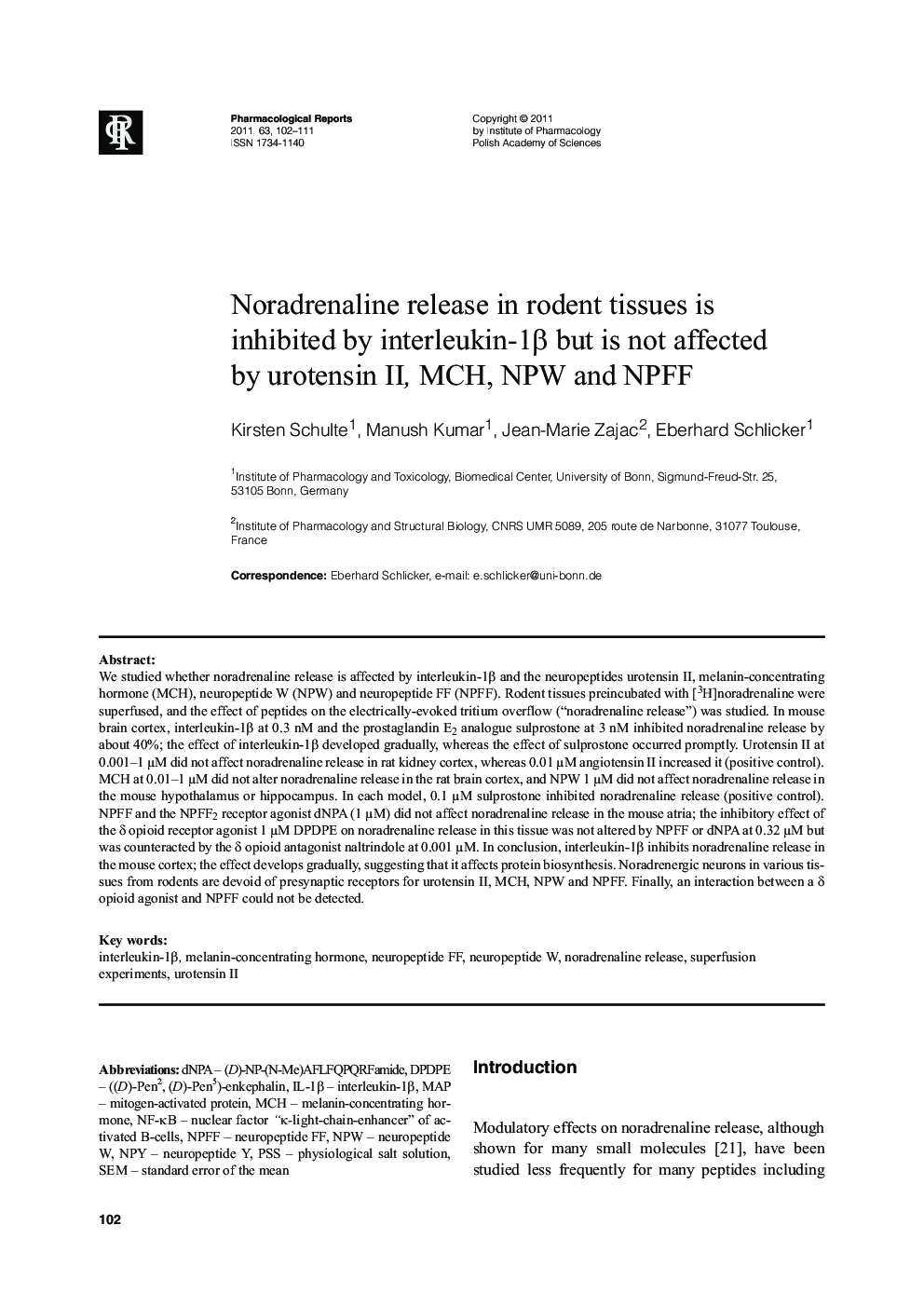| Article ID | Journal | Published Year | Pages | File Type |
|---|---|---|---|---|
| 2011057 | Pharmacological Reports | 2011 | 10 Pages |
We studied whether noradrenaline release is affected by interleukin-1β and the neuropeptides urotensin II, melanin-concentrating hormone (MCH), neuropeptide W (NPW) and neuropeptide FF (NPFF). Rodent tissues preincubated with [3H]noradrenaline were superfused, and the effect of peptides on the electrically-evoked tritium overflow (“noradrenaline release”) was studied. In mouse brain cortex, interleukin-1β at 0.3 nM and the prostaglandin E2 analogue sulprostone at 3 nM inhibited noradrenaline release by about 40%; the effect of interleukin-1β developed gradually, whereas the effect of sulprostone occurred promptly. Urotensin II at 0.001–1 µM did not affect noradrenaline release in rat kidney cortex, whereas 0.01 µM angiotensin II increased it (positive control). MCH at 0.01–1 µM did not alter noradrenaline release in the rat brain cortex, and NPW 1 µM did not affect noradrenaline release in the mouse hypothalamus or hippocampus. In each model, 0.1 µM sulprostone inhibited noradrenaline release (positive control). NPFF and the NPFF2 receptor agonist dNPA (1 µM) did not affect noradrenaline release in the mouse atria; the inhibitory effect of the δ opioid receptor agonist 1 µM DPDPE on noradrenaline release in this tissue was not altered by NPFF or dNPA at 0.32 µM but was counteracted by the δ opioid antagonist naltrindole at 0.001 µM. In conclusion, interleukin-1β inhibits noradrenaline release in the mouse cortex; the effect develops gradually, suggesting that it affects protein biosynthesis. Noradrenergic neurons in various tissues from rodents are devoid of presynaptic receptors for urotensin II, MCH, NPW and NPFF. Finally, an interaction between a δ opioid agonist and NPFF could not be detected.
